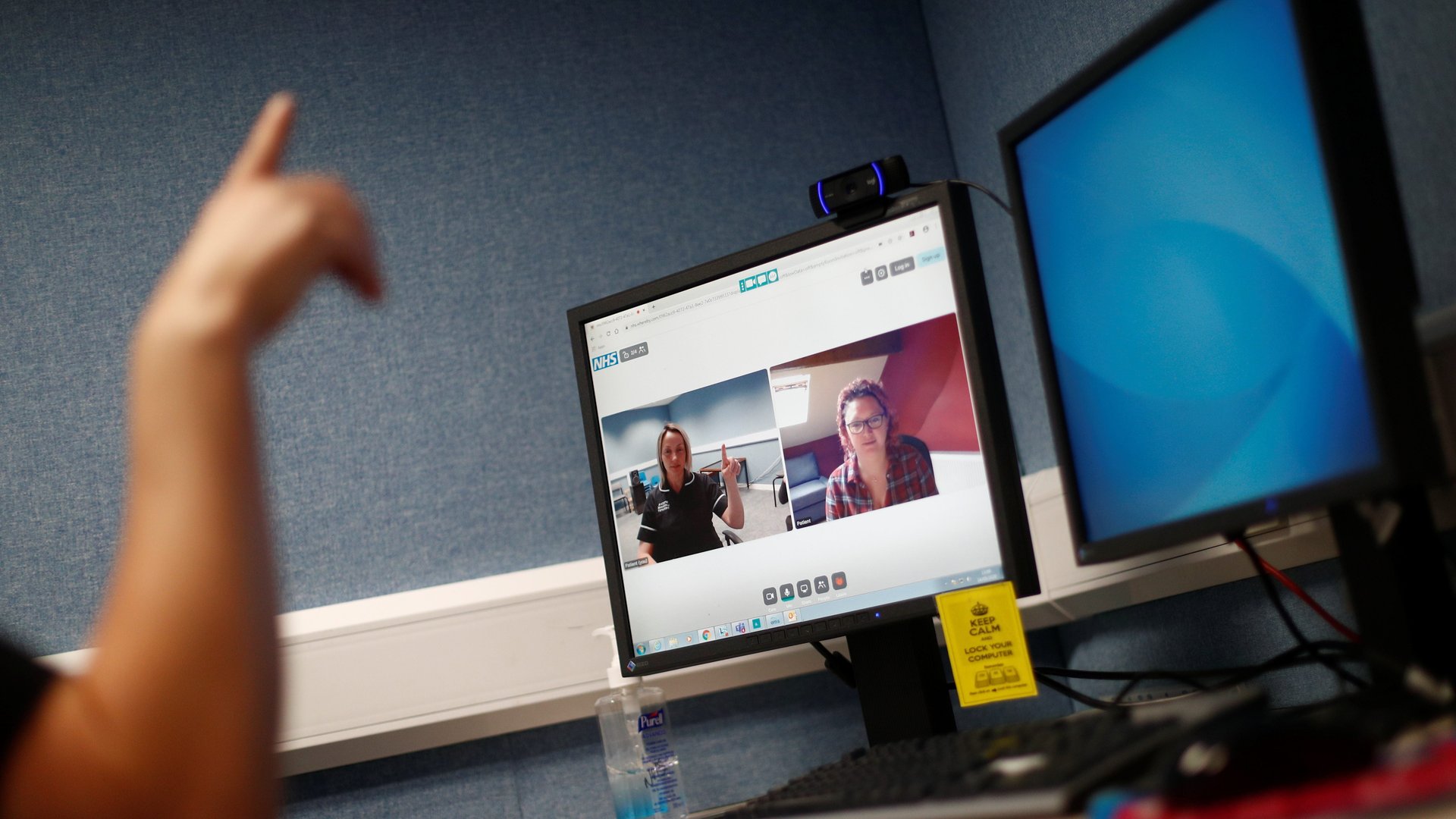Covid-19 has forced medical interpreters to make a hasty switch to digital
Before Covid-19, Luz Molina was working with a patient who didn’t speak English at the Mayo Clinic in Rochester, Minnesota. The medical interpreter was assigned to translate between the Spanish-speaking patient and his healthcare providers, communicating his words and emotions while making sure he got all the medical information he needed.


Before Covid-19, Luz Molina was working with a patient who didn’t speak English at the Mayo Clinic in Rochester, Minnesota. The medical interpreter was assigned to translate between the Spanish-speaking patient and his healthcare providers, communicating his words and emotions while making sure he got all the medical information he needed.
But this patient needed a breathing device, and it made it impossible for him to speak clearly. He was upset, but the nurses caring for him couldn’t figure out why. “[They] felt so frustrated every time they had to communicate with him,” Molina says. One day, thinking on her feet, Molina asked the patient if he could write down what he needed instead, and then Molina could translate. It worked: He wrote that he was experiencing pain in his legs. His providers were able to address it immediately.
This kind of improvisation wouldn’t have been possible over a remote call. But that’s exactly how Molina and other medical interpreters are having to work during the coronavirus pandemic. Covid-19 has highlighted that medical interpretation is a critical job: Minorities have been hit hardest by infections, and there haven’t been adequate federal language resources for those who aren’t comfortable in English. Rules built to slow the spread of the virus, though, have made that job more difficult.
Hospitals in the United States have faced a difficult choice: Keep interpreters in the room to enable them to do the best job possible, or switch over to video conferencing services. The former risks higher rates of disease transmission, while the latter makes translation services harder for patients with limited English proficiency. Most of them have pivoted away from in-person translation services and added more digital options like phone calls or video conferencing—to limited success.
The process has highlighted how translation is about more than words. In person, interpreters have access to all the non-verbal communication in the room—posture, gestures, energy. An interpreter can tell if a person is frustrated or despondent, which could reflect symptoms that are crucial for their health care provider to understand.
Phone or video calls—like the ones used on secure platforms like LanguageLine Solutions, a favorite of the American Hospital Association and large facilities like Mt. Sinai Hospital in New York—are good, but block a lot of these non-verbal cues. “Patients may not say, ‘I have no idea what you just said,'” Salome Mwangi, a medical translator based in Boise, Idaho, told Time. Instead, she relies on their body language, like placement of their hands or the way they’re sitting, to see if her patients understand their providers’ instructions.
Even though the platform looks like any other video conferencing screen, delays, poor sound quality, or bad video can cause “Zoom fatigue,” and undoubtedly interrupt the flow of information. “How much gets lost with those sounds isn’t very clear,” says Graciela Porraz Capetillo, another interpreter with Mayo.
Interpreting over video can be particularly challenging if the person in question is unable to verbally communicate—as are many Covid-19 patients who have been intubated. Helen Sweeney, an interpreter who works primarily remotely, had a patient similar to Molina’s, but was interpreting for him remotely as his health care team was deciding if going on a ventilator would be appropriate. “We just kind of had him do like a thumb up or thumbs down for ‘yes’ or ‘no.’ And we just simplified the communication,” she told Recode.
Some of the empathy or improvising medical interpreters have to do on the job simply can’t be done over video. Capetillo gave the example of patients coming in from remote areas in Central and South America: They may speak a less common, local language fluently, and speak Spanish as their second language with no English at all. Translation services like LanguageLine can sometimes provide an interpreter for the first language, but in time-sensitive cases, Spanish may be the only option—making it harder to break down complex medical jargon for patients. Normally, being in the room would allow Spanish interpreters to pick up when they need to repeat themselves, slow down, or simplify. That balance becomes much more difficult on a remote call.
There is one advantage teams have found with digital interpretation: Interpreters spend less time “commuting” from room to room within the hospital. “We’re getting more actual time with our interpreters,” says Bruce Sutor, the medical director for language services for Mayo. This is particularly time-saving if they need to make the transition into an operating room, in cases like cesarian sections. Now, they can jump in in a matter of seconds.
Hospitals need to find long-term solutions to digital medical interpretation—ones that, with improvements, can more closely mimic the experience of being face-to-face. Even after the pandemic ends, there will be cases where digital options make interpretation more accessible. The scramble to get these services up and running may have been messy, but it could lead to long-term improvement.